Parsi New Year in India | History, Wishes, Date, Traditions [2024]
According to the Shahenshahi calendar, the Parsi New Year is August 15th, 2024. Parsis in India will adequately celebrate this occasion. Gujarat and Maharashtra have large Parsi communities in India. On the day, they go to the temples and pray.
The customs include exchanging gifts, praying, feasting, eating festive foods, and spending time with family, relatives, and friends.
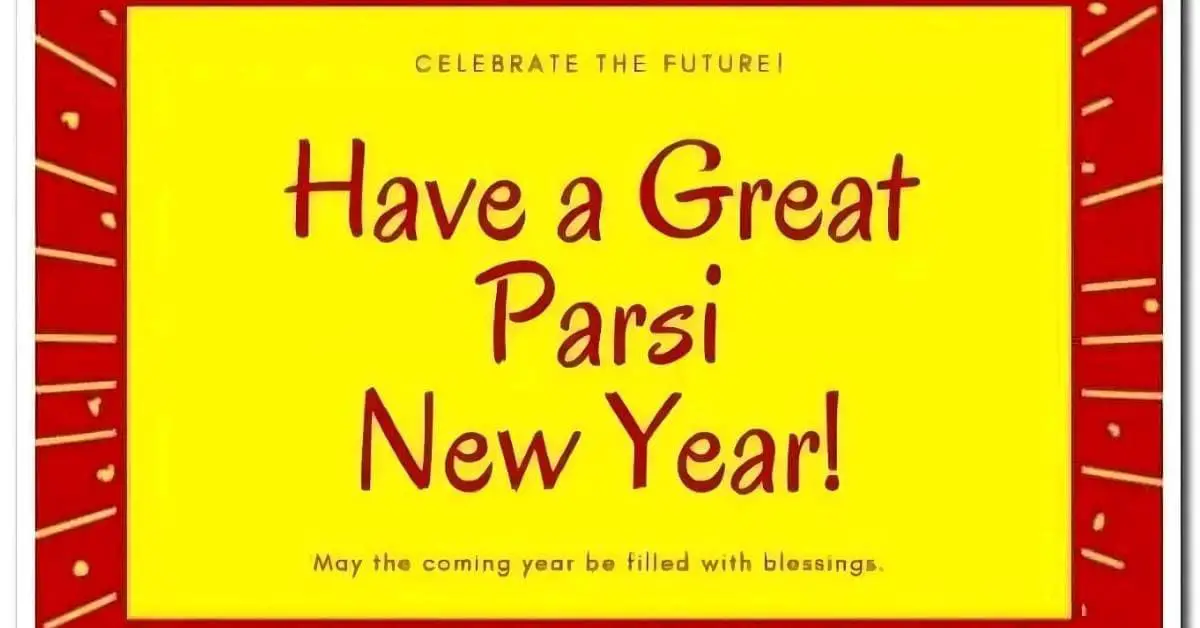
Parsi New Year
Parsi New Year History
As per the folklore, Jamshed, the king of Persia, saved everyone from a never-ending winter. People asked Jamshed for his help. To protect the world from the apocalypse, Jamshed sat on Demon’s shoulder and went to heaven.
There, he used his gem-studded throne and shone brighter than the sun. Winter ended, and a new day was born. Henceforth, the day is called “Navroz”. “Nav” means new, and “Roz” means day in Persian. Parsis have been celebrating this event as their New Year for 3,500 years. The Iranian calendar begins on the day of the Parsi New Year.
The Parsi community celebrated Navroz on the first day of spring. Jamshed-e-Navroz (pronounced [nowˈɾuːz]; lit. ‘new day’) is the Iranian New Year, known as Persian New Year. They celebrated the Navroz on the day of Vernal (spring) Equinox.
Read New Year & Christmas Carnival celebration in Kolkata
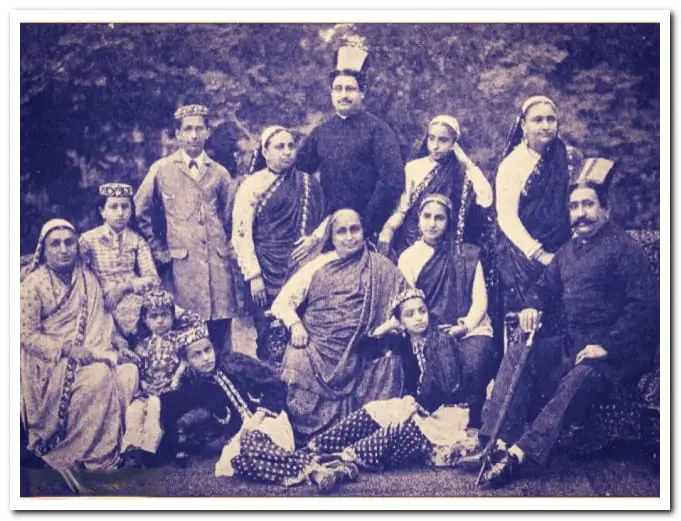
Rituals and Traditions of Parsis
![Parsi New Year in India | History, Wishes, Date, Traditions [2024]](https://www.theholidaystory.com/wp-content/uploads/2021/07/Haft-Sheen-table.jpg)
The Parsis dress up traditionally and adorn their house with fresh flowers. They cook tasty food such as Prawn Patio, Mori Dar, Patra Ni Macchi, Haleem, Akoori, Berry Pulao, and Patra ni Machhi.
Many fast for 19 days, from sunrise to sunset, before Navroz. Parsis clean their homes, minds and hearts of all the negative things. The cleaning before Navroz is called “Pateti“.
Zoroastrian Navroz’s new year will be celebrated on August 16th. They greet each other and exchange sweets and gifts.
On Navroz, “Haft Sin” (a table) is decorated with seven things. Number seven is of great significance to them. Each item symbolizes something.
After breakfast, they visit the Fire Temple to perform Jashan (a prayer). Parsis pray for prosperity and ask forgiveness for the sins committed to them. Items like milk, flour, sandalwood, fruit, and water are offered to the sacred fire.
| Name of items | Symbolic to |
| Sib (apple) | Health and beauty |
| Sabzeh (sprouts) | Greenery, birth and nature |
| Seer (garlic) | A symbol of disinfection |
| Senjed (dry fruits) | Representation of wisdom |
| Serkeh (vinegar) | Age and patience |
| Samanu (sweet pudding) | Power, bravery and fertility |
| Sumac (berries) | Life simulation and tolerance |
Jamshed-e-Navroz
It’s the most important day for Parsis, named after their ruler, Jamshed. On this day, Jamshed ascended the throne. Jamshed-e-Navroz, or Persian New Year, begins the Vernal (spring) Equinox.
The sun traverses the celestial Equator and makes the night and day Equal. Winter changes into summer, and spring begins in the Northern Hemisphere. Farvardin (the first day of the month) will be celebrated in March. Parsis celebrate the New Year after 200 days of Jamshed-e-Navroz.
Read National International Mango Festival Day celebration
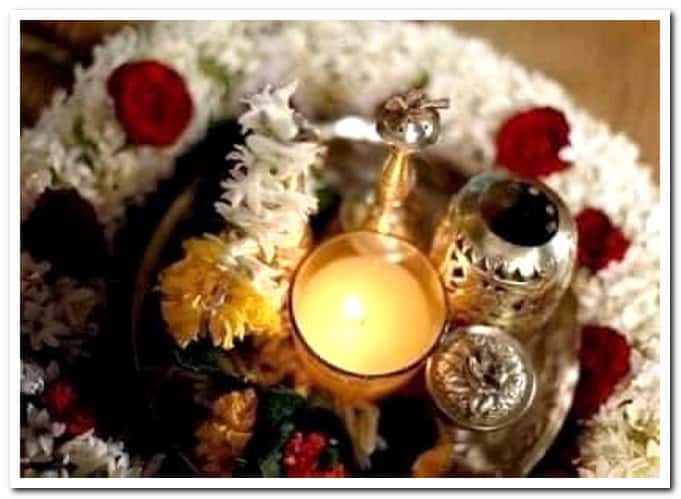
Rituals and Traditions at Birth
The navjote ceremony is performed to consider a child born in a Parsi family as a Zoroastrian (follower of Zoroaster). The word “Navjote” means the prayers offered by a new initiate.
Between the age of 7-15, this ceremony is performed by instituting a child with a sacred shirt called “Sudreh” and a sacred thread “Kusti”. The child wears Kusti for the rest of his life. “Sudreh” is made from pure white cotton or muslin cloth.
“Kusti” is made from 72 threads of lamb’s wool. “Kusti’ and “Sudreh” protect the child from all evil things and thoughts.
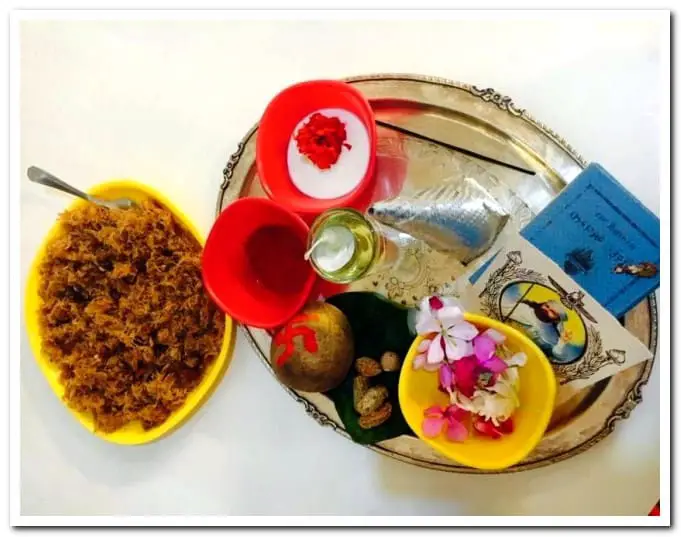
Rituals at Marriage
Earlier during marriage, the bride and the groom tied a cloth around their chair. The priest tied their hands with a piece of twine seven times.
An assistant priest held an Afarghan. He fed the fire with sandalwood and incense, and the senior priest chanted prayers.
After, the priest removed the cloth curtain from the groom and bride. They threw handfuls of uncooked rice at each other, it symbolizing prosperity.
Now, the bride and the groom sit beside each other with their parents and relatives. A witness stands beside them, with the priests standing in front. The priest asks questions, and the marriage interrupts if they refuse to answer.
While reciting the prayers, the priest throws uncooked rice at the couple. Afterwards, they visit the Agiary (Fire temple) for blessings. The bride is given a small wick lamp in a silver protective vase. The lamp must keep burning in the chambers all night.
![Parsi New Year in India | History, Wishes, Date, Traditions [2024]](https://www.theholidaystory.com/wp-content/uploads/2021/07/parsi-marrage.jpg)
Rituals at Death
The death rituals continue for four days. On the tenth day, a prayer is recited at home and the Fire Temple. After a month, prayers are recited again and recall the death anniversary is every year.
The dead body is disposed of on top of a hill in the “Towers of Silence”. Birds devour the flesh. After a few days, bones are lowered into a well. The well contains layers of minerals like charcoal and lime.
Read Best Durga puja in Mumbai
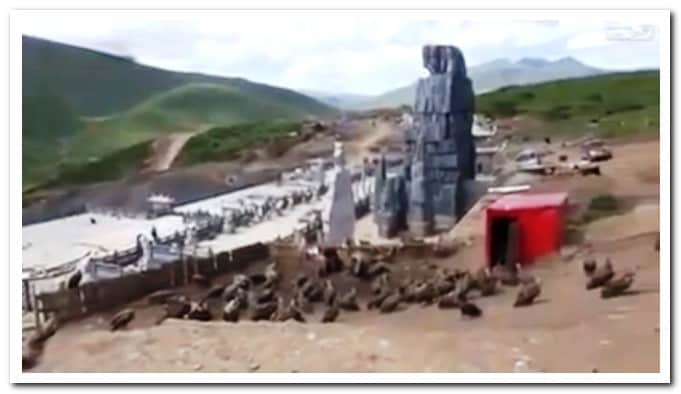
Gahambars
Gahambars are the six seasonal festivals of the Parsis. It’s a Parsi Thanksgiving when everybody eats together, portraying the unity in the community. As per the Zoroastrian calendar, there are six seasons. A Gahambar is celebrated for each one of them. The six Gahambars or festivals are mentioned in the holy book “Avesta”.
The six Gahambars (seasonal festivals) of the Parsis are:
| Name | Time of celebration |
| Maidyozarem Gahambar | Mid-spring |
| Maidyoshahem Gahambar | Mid-summer |
| Paitishahem Gahambar | Harvest time |
| Ayathrem Gahambar | Herding time |
| Maidyarem Gahambar | Mid-winter |
| Hamaspathmaidyem Gahambar | Mid path of all |
Khordad Sal
Khordad Sal marks the birth of Prophet Zoroaster. It’s an important day for Parsis and is celebrated after six days of Navroz. Prayers are specially chanted at the fire temple.
Parsi people organize Thanksgiving, greet each other, and exchange gifts. They donate and perform charitable work, essential in Zoroastrianism (Parsi religion).
Parsi Meaning
Parsi or Parsee are the followers of the Iranian prophet Zoroaster (Zarathustra) in India. The name Parsi means Persians. They descended from the Persian Zoroastrians.
These people migrated to India to save themselves from religious persecution. They are non-Hindu and live in a well-defined community. Parsis settled and lived in Gujarat for 800 years as a community practising agriculture. The community is wealthy with success in heavy industries like shipbuilding and railways.
Read 65 Best Durga Puja in Kolkata
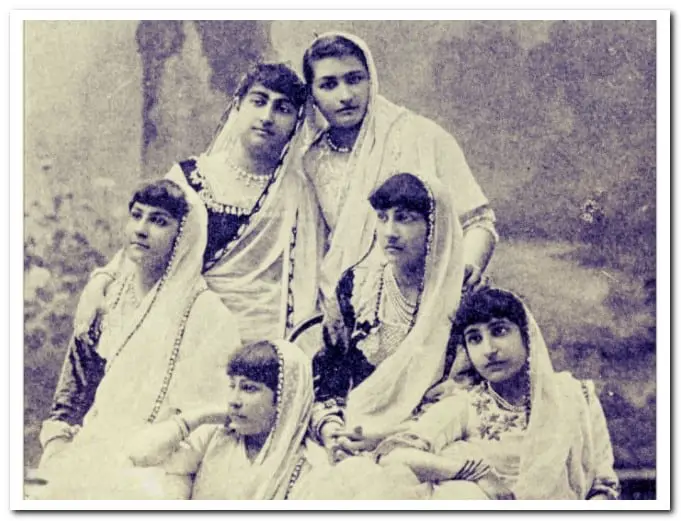
Parsi Religion
Parsi is an ethnoreligious group on the subcontinent of India and the oldest religion in the world. They follow the Zoroastrianism religion. These people follow the Iranian prophet Zoroaster (Zarathustra).
As per mythology, Zoroaster, a supreme being, participated in the purification ritual when he was 30. He taught followers to follow “Ahura Mazda” as the only god. “Zend-Avesta” (holy book) contains the law and teachings of Prophet Zoroaster.
Their place of worship is Dar-e-Meher, or the Fire Temple. An eternal flame continues to burn in a sacred place. They pray many times daily wearing a Kusti (a cord knotted three times) around Sudreh (a clean, long white cotton shirt).
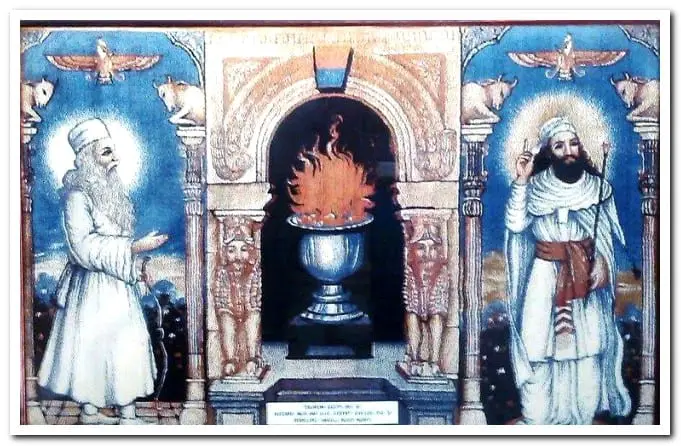
Parsi Community
Parsi is an ethnic community that follows Zoroastrianism as their religion. The god of Parsi is “Ahura Mazda”. They speak either Gujarati or English, and the native language is Avestan. Dadar Parsi Colony is the largest in Mumbai.
The colony is one among 25 other colonies in Mumbai designated only for the Parsis. The Parsi community is the most successful minority group of migrants worldwide.
Families like Tata, Godrej, and Wadia are India’s top corporate dynasties. They celebrate many unique festivals as a community together. It’s a role model for other communities.
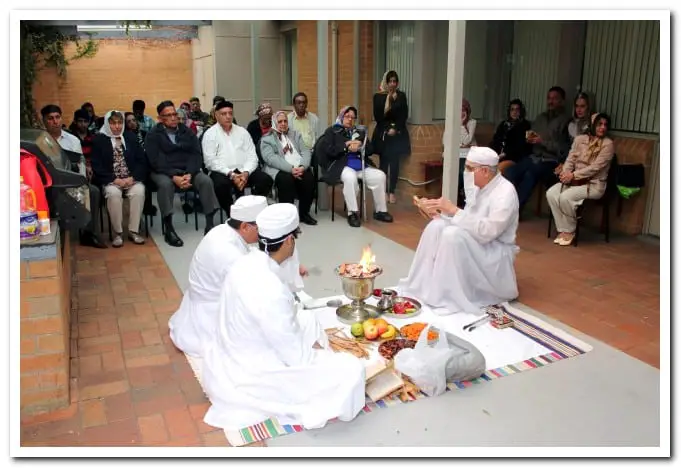
Parsi Population in India
According to the FEZANA journal, there are approximately 111,691-121,962 Parsis globally. The study concluded that half of them live in India and Iran. As per the survey conducted by GAMAAN in 2020, there are 61,000 Parsis in India.
The Parsi population is declining because of migration and childlessness. Demographic trends (Taraporevala, S. (2000)) predict that the number of Parsis will decrease to 23,000 in the coming years.
Parsi New Year in India
Parsi New Year is a regional holiday in India known as “Jamshedi Navroz”. The festival falls on the spring equinox each year.
However, Parsis living in India follow the Shahenshahi calendar. Thus, they will celebrate their New Year on August 15th, 2024. A grand celebration of Navroz will be held in Maharashtra and Gujarat, as many Parsis live there.
Parsi New Year Special Food
Traditional Parsi cuisine is famous among Parsis in India and Pakistan. Their cuisine ranges from primary meals like rice, curry, etc., to desserts and snacks.
10 Most Popular Parsi New Year Dishes are
- Dhansak: A mixture of chicken, mutton, lamb, goat or vegetables and lentil or toor dal gravy. It’s usually served with brown rice.
- Patra ni Machhi: A steam-cooked fish stuffed with green chutney wrapped using banana leaves.
- Sali Murghi: Fired matchstick potatoes served with spicy chicken.
- Saas ni Machhi: A pomfret fish stuffed with white sauce and served with rice.
- Kolmi no Patio: It’s a spicy tomato curry with shrimp.
- Ravo: A sweet semolina Parsi-style pudding.
- Sev: A delicious dessert prepared by vermicelli.
- Dar ni Pori: Lentils stuffed in light pastry after sweetening.
- Doodh na Puff: A special Parsi delicacy made during winter.
- Khaman na Ladva: Dumplings that are stuffed with coconut after sweetening.
Read Best Train Journeys in India
![Parsi New Year in India | History, Wishes, Date, Traditions [2024]](https://www.theholidaystory.com/wp-content/uploads/2021/07/Chicken-Farcha-Parsi-food.jpg)
Parsi Temple
Parsis worship at Dar-e-Meher or the Fire Temple. In Zoroastrian, fire and water are means of purity rituals. An eternal fire burns in the Fire Temple constantly. There are 177 Fire Temples worldwide, forty-five in Mumbai, 105 in the rest of India and 27 outside India.
The Zoroastrian priesthood is tardigrade (the system comprising three grades). Instead of holding sermons, the priest worships fire. The chief priest is called Dastur, and ordinary priests are called Mobad. People who help in conducting ceremonies are called Herbad. Parsis worship “Ahura Mazda”, their only god in the Fire Temple.
![Parsi New Year in India | History, Wishes, Date, Traditions [2024]](https://www.theholidaystory.com/wp-content/uploads/2021/07/Fire-Temple-Baku.jpg)
Fire Temple comprises three grades or orders. They are “Atash Behram”, “Atash Adaram”, and “Atash Dadgah”. The earliest Fire Temple in India at Sanjan, is believed to be built around 790 AD.
A hundred miles from Bombay is a Fire Temple where the sacred fire has been burning continuously since 1741. Refugees from Iran brought the holy fire.
![Parsi New Year in India | History, Wishes, Date, Traditions [2024]](https://www.theholidaystory.com/wp-content/uploads/2021/07/fire-temple-in-Kolkata.jpg)
8 Fire Temples in India
| Name of the temple | Location |
| Bahrot Caves | Dahanu, Maharashtra |
| Banaji Limji Agiary | Mumbai, India |
| Iranshah Atash Behram | Udvada, Gujarat |
| Maneckji Seth Agiary | Mumbai, India |
| Parsi Fire Temple | Secunderabad, Telangana |
| Royapuram Fire Temple | Royapuram, Chennai, India |
| Desai Atash Bahram | Navsari, Gujarat |
| Zoroastrian Anjuman Atash Adaran | Bou Bazaar, Kolkata, WB |
How is the Persian New Year Calculated?
Zoroastrianism has three types of calendars, and Parsis follow Zoroastrianism, the oldest monotheistic religion. They celebrate the festival every year during the spring equinox. Approx. March 21st.
However, in India, the Parsi community follows the Shahenshahi calendar. According to the Shahenshahi calendar, the leap years are not considered.
Thus, the festival has moved by 200 days from its original day of the spring equinox. Parsis’ new year in India will be celebrated on August 16th. The oldest and official calendar of Iran and Afghanistan is Solar Hijri.
The calendar begins in spring in the Northern Hemisphere between two solar noon. The 1st noon is the last of one calendar, and the 2nd noon is on Navroz or New Year.
According to the Solar Hijri calendar, we are currently 1400. It’s used in astronomical calculations to determine vernal equinoxes because of no significant error.
Parsi New Year Wishes
Parsis celebrate Navroz to mark the beginning of the Iranian and Persian calendars. The entire Parsi community celebrates and wishes each other by saying “Happy Navroz” or “Navroz Mubarak”. Popular Parsi New Year greetings are:
- “The happiness and well-being of your family and you are in my prayers”.
- “Sending you warm wishes on this New Year”.
- “May you set an example for all, and may your year be filled with joy and happiness. Happy Navroz!”
- “Happy Navroz! May we spread the galore of Jamshed far and wide. Let’s pray for the happiness of the entire community”.
- “May this Navroz mark the starting of something great in your life, fulfilling all your dreams and giving you new hopes”.
Read Celebrating Chinese New Year in Kolkata Territy Bazar
What is Pateti?
“Pateti” is derived from the word “Patet”, meaning repentance. It’s the day before Navroz and is celebrated on the eve of Parsi New Year. Parsis think about the good and bad things that happened to them in front of holy fire.
They promise to live a life according to the principles of Zoroastrianism. Afterwards, they wish each other “Pateti Mubarak”. Pateti is the day of penance, celebrated to gain health, wealth, and prosperity. The Parsi community greet each other, exchange gifts and savour the Parsi cuisine.
Is Parsi New Year a Public Holiday in Gujarat?
Gujarat, the westernmost state in India, has a Parsi population of about 60 million people. Parsis are accumulated in the states of Maharashtra and Gujarat.
The Parsi New Year is a regional holiday in Gujarat. This year’s holiday is on Monday, August 15th, 2024. A regional holiday (national holiday) is a day off from work for cultural celebrations.
What is Navroz in Islam?
Ismaili Muslims celebrate Navroz to mark the beginning of spring and a New Year. In Islam, Navroz is a time for spiritual and physical rejuvenation.
Navroz is the day when the whole family gathers in Iran and Persian-speaking countries. The celebration to start the new year with joy and hope is called Tahvil-i Sal.
What is Navroz Mubarak?
Navroz (Nowruz) commemorates the Iranian and Persian New Year. It’s the celebration of the beginning of spring. Equinoxes mark the day.
On this day, the sun crosses the celestial equator. Navroz means a new day and is also known as Jamshed-i-Nowruz in India.
Which God is Worshiped by Parsis?
Parsis are a group of Iranian Zoroastrians who follow the teachings of Zoroaster. He was a divine supreme being who taught them to worship only one god, “Ahura Mazda” (lord of wisdom). Parsis believe their god to be formless and omnipresent.
There are no idols of their god in the Temples. They worship seven Ameshaspands (divine attributes of god) and Yazads (powers created by the god). The six Yazads worshipped by Parsis are Fire, Water, Earth, the Sun, Moon, and Stars.
Which Countries Celebrate Navroz?
Navroz is the celebration that marks the beginning of spring or a new year. On March 21st, Navroz was celebrated by countries like Afghanistan, Azerbaijan, Iran, Iraq, Tajikistan, Uzbekistan, Kyrgyzstan, Kazakhstan, Pakistan, Turkey, and Turkmenistan.
In India, they will celebrate the Parsi New Year on August 16th, according to the Shahenshahi calendar.
Where do Parsis go to Worship on Navroz?
On Navroz, the Parsis visit the Fire Temple or Agiyari to pray. In every Fire Temple, an eternal fire burns continuously on the altar. Agiyari is the place where they worship their god “Ahura Mazda” and his seven Ameshaspands (divine attributes of god) and Yazads (powers created by the god).
Where do Parsis go for Prayer?
Parsis are the followers of Zoroaster, who taught them to worship only one god, “Ahura Mazda”. They worship many times a day. Their place of worship is called a Fire Temple or Agiyari.
There are no idols of god in the Temple. Parsis worship the seven divine attributes and the six powers created by the god. An eternal fire constantly burns in the Fire Temple on an altar.
How many Fire Temples are there in India?
Parsis worship at the Fire Temple or Ayigari. In India, there are 150 Fire Temples. Some of the famous Fire Temples are Bahrot Caves (near Dahanu), Banaji Limji Agiary (Mumbai), Iranshah Atash Behram (udava), Maneckji Seth Agiary (Mumbai), Parsi Fire Temple (Secunderabad), etc.
What do you mean by Fire Temple?
A Fire Temple, Agiary, Atashkadeh, Atashgah, or Dar-e Mehr is the place of worship for the Parsis. It’s called a Fire Temple because of the practice of keeping the hearth fire burning at the altar. Parsis worship their god “Ahura Mazda” and his seven Ameshaspands and six Yazads in the Fire Temple.